PICTURES OF CANALS
CANAL AND WATERFRONT
LIVING IN OTHER PLACES AROUND THE WORLD
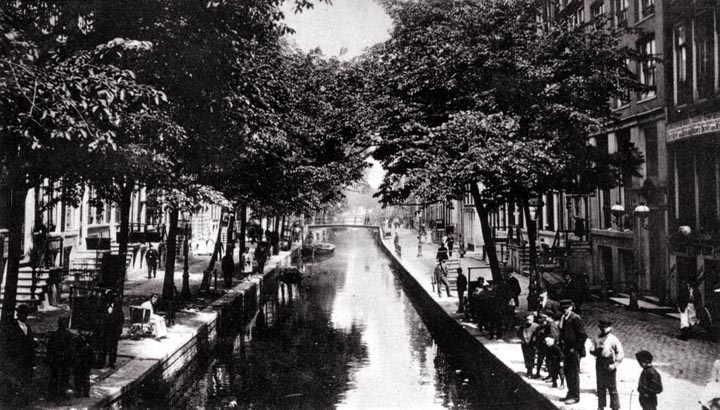
A beautiful old scene from Amsterdam, Holland
![]()
|
![]()
FLORIDA
Classic canal areas in Florida consist of Ft. Lauderdale first and formostly, but also Pompano Beach, Palm Beach and Miami Beach, all on the East Coast. Key West is cut with canals as well, and on the West Coast we have (from south to north) Naples, Punta Gorda, Port Charlotte, Sarasota's 'keys', Clearwater Beach and its neighboring Pinellas beach communities. Some of these places are known the world over as desirable living and vacation locales, and have been established for many decades. More recently, the SunCoast area has been gaining momentum as prices in these other markets have risen very much, 'catching up' with prices on the other side. Ft. Lauderdale leads all American cities in the sheer inland mileage of inland waterways.
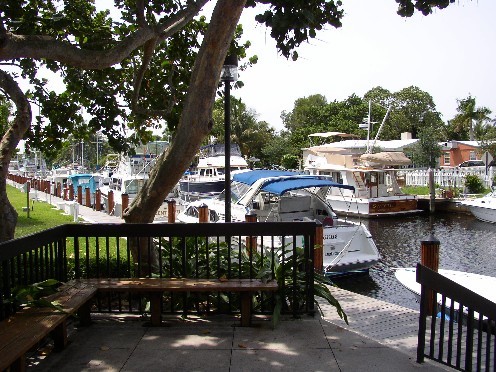
A scene from the champion of canals in America: Ft. Lauderdale, Florida
Notice the amount of luxury boats here- certainly different from our little fishing boats!
Continuing up the West Coast from Clearwater, one finds those places only in the past few years put on the map. Gulf Harbors is part of New Port Richey in Pasco County, but a neighborhood unto itself, jutting out into the Gulf from the coast. It is 10 miles south of Hudson. As well, Hernando Beach in Hernando County is 10 miles north of Hudson, and abutting it is Weeki Wachee Gardens. These are the major canal areas in Florida. Now, even the ones undiscovered have been found, part of this is because of suburban sprawl, which has expanded cities to encompass what were formally 'the stix', and part of it rests on the natural desirability of waterfront living. Hernando and Gulf Harbors are now rather expensive, and this leaves Hudson Beach as the least expensive waterfront city in Florida and perhaps the U.S., statistics confirmed by the Wall Street Journal article of a year ago.
Skeleton Key Marina at Hudson Beach
ELSEWHERE AROUND THE USA
There are waterfront cities like Martha's Vineyard, Nantucket, Virginia Beach and Myrtle Beach from Maine to Florida, Alabama to Texas, and along the California coast. As their names suggest, they are far and away some of the most expensive and, now, exclusive places around. Like the east-coast of Florida, the coasts of America are very heavily populated, and long ago built out. Legislation in Florida (where the highest number of canal towns are) California and the other states, have placed restrictions on the digging of canals in the future. Generally, the governments have concluded that doing so is a degradation to the natural wilderness left on these states' coastlines. As in the case of global warming, surely that is partly true, but other forces contributing much more heavily to the degredation of the US environment are ignored (such as the reasons for population explosion itself) while the white-hot spotlight is focused in hyper-regulation on certain issues. This environment, one of business concerns rather than environmental protection, left Hudson without a deep water channel until after a 20 year battle was finally won in 2005. What was the big problem (in cutting one channel for the good of the entire town, that had already existed)? Seagrass in the area would be damaged by boats coming and going from Hudson. The bureaucratic solution? Plant some seagrass elsewhere and designate certain 'no boating' areas. Time to find this solution? 20 years. In saner days, the 1920s, Venice, Italy was visited by some Americans who returned from that place but could not shake the vision of such an idyllic place, nor the 'can do' idea that Venice could be replicated in their own land, where a city would be built with canals instead of streets. The result can be found in California: Venice Beach.
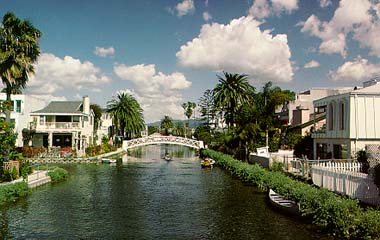
Here, after Jim Morrison and the Doors helped make the canals a `hippie paradise' in the 1960s,
prices skyrocketed and the neighborhood was gentrified. Now, only the very wealthy can move to
a canal there, not a very 'The Doors' kind of circumstance, being as it is quite different from the scene pictured below.
All this promises to make unknown Hudson, Fla's future more expensive- but, is that really 'better'?
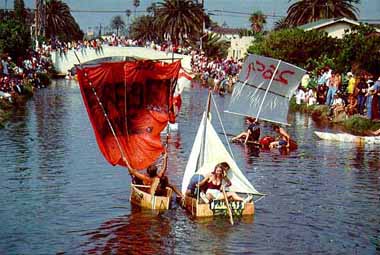
Back in the Hudson Beach area, look at this Sea Pines canal crossing.
people put broken up rock along the seawalls as we can see here, to
buffer them against the twice a-day incoming and outgoing tides.
Sea Pines canal crossing, Hudson Beach, FL
![]()
|
![]()
AROUND THE WORLD: EUROPE
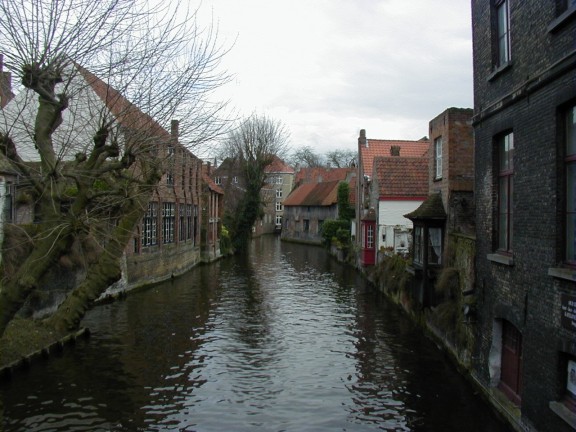
In Europe, there are select places that have a canal atmosphere.
Here is Bruges, Belgium, with its leafy waterways.
Venice, Italy is one of the most famous places in the world- former cener of empire (the Venetian, not Roman)- a big city purposely built with canals as the main source of transportation. Using a boat to get to `a destination' throws modern people back to a time that antedates the use of the automobile on land. We have used cars in mass transportation for 100 years, but we've been using boats for 5000. And whereas today one thinks of the romance of the Venice canals, what with the Gondolas and honeymooners going hand in hand, recall also the economic and... simply different feel of this kind of environment. Another reason to like it is because using boats and waterways instead of cars and streets goes against the plan and wishes of the machine, and that is always good.
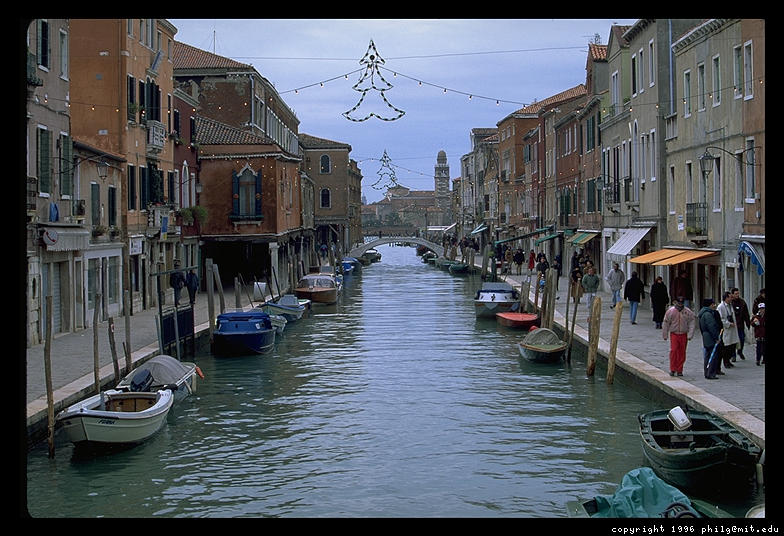
Wheras everybody (whose anybody) knows about Venice, there are some other cities in Europe, Amsterdam and Copenhagen to name two, that are integrated with canals as Venice is, just not to the same degree. Here is Amsterdam, the Dutch capital and a remarkable place. Its canals were dug in the 1600s and along them were built the stately homes and businesses you see here. As Holland spread an empire of commerce from the West Indies to the East, the homes of these wealthy pioneers of business were placed here, along famous canals like the 'Heerengracht' ('Gentleman's Canal'). Today, they are used not only as a tourist attraction, but also for their original function as well: great view and pleasant way of life for the residents.
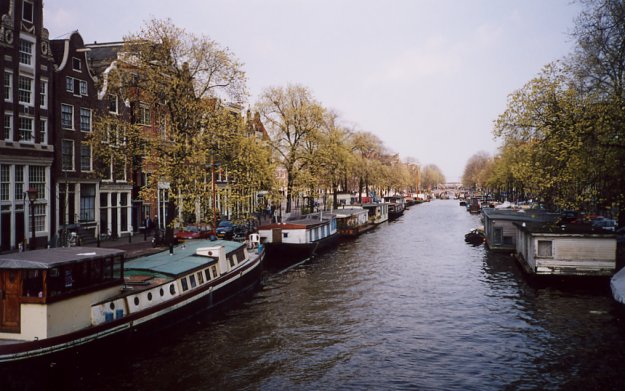
Amsterdam has the same hellish problems as most large European cities today,
but in the old town, shown here, the originally great aspects of life are well exemplified, and still remain
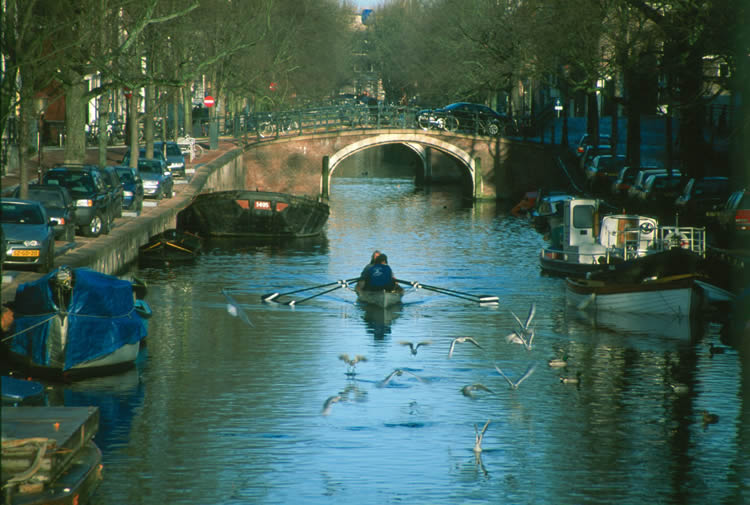
And here is Copenhagen, Denmark. This city is full of inland waterways as well.
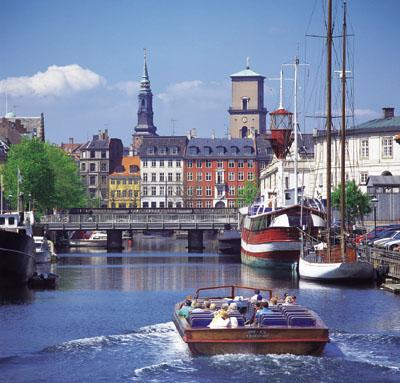
It seems like the northern Europeans had more propensity for building waterways in their cities.
We have already seen Copenhagen and Amsterdam-- and below is Stockholm, Sweden, another pretty scene from
another European capital. Look at the number of medium sized watercraft, obviously for pleasure transport.
Like Minnesota, Wisconsin and Michigan, northern Europe is a land of ten thousand lakes. Swedes who cabin or
live on their lakes enjoy local crayfish festivals every summer.
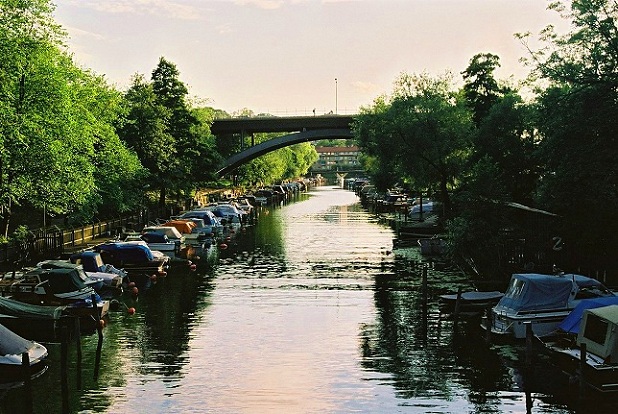
In later Medieval times and on into the Renaissance period in northern Europe, there was a commercial entity called the 'Hanseatic League.' The members of the league were not individuals but entire cities. The cities themselves, like Danzig, Lubeck, Bremen, Koneigsberg and Amsterdam, were as members the sovereigns of trade in the Baltic, as the world began learning about economics. Danzig (modern Gdansk, Poland), for example, traded Polish grain to its neighbors in Germany and Holland, in exchange for other goods made there that Polish landowners would then buy. Danzig was a free city well before that idea became popular. Its canals are shown here below:
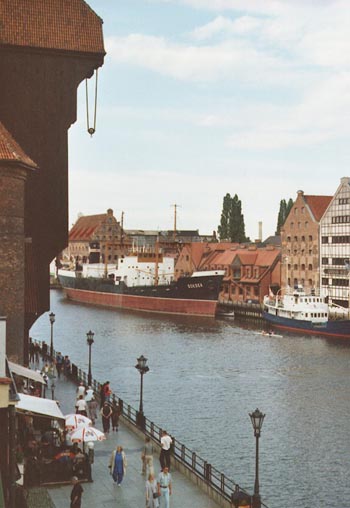
In 1700 the Russian Czar, Peter the Great, wanted to Westernize his great nation. To do that he wanted a grand new capital city that would be his 'window to the West,' and had the city of St. Petersburg built, founded in 1701. One interesting development is that Peter went to Holland in disguise and took at menial job with a Dutch shipmaking company. He learned business and the benefits and architecture by observing Dutch habits and economic thought. He also fell in love with the idea of a great city strewn with canals, and so in St. Petersburg we have them as well:
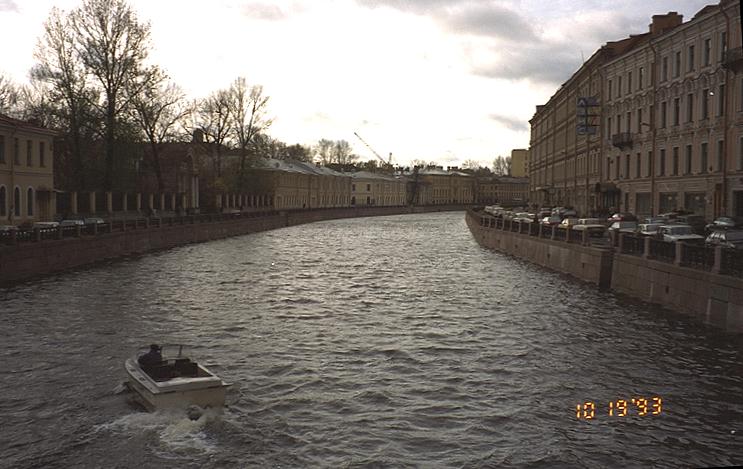
Russia has a funny habit of getting very cold in the wintertime, and hence,
so too the waterways in St. Petersburg. Here is the same canal in January!
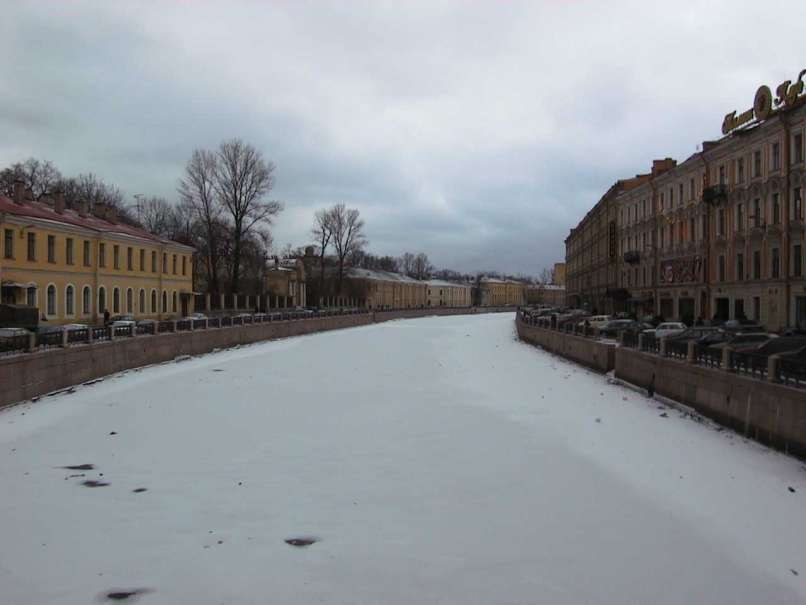
On a whole, people have always gravitated towards the water. The history of all the major nations reflects a desire to be on the sea, (partially for security and transport, but also so people can live there) and all the major European port cities: Hamburg, Amsterdam, Dubrovnik, Gdansk, Venice, Pireaus, Ostia, Lubeck, St. Petersburg, Lisbon, Odessa, Varna, Ptolemais, Caesarea, Marseille etc. have a distinctive feel to them. And think of the Polynesians plying the waters of the South Pacific. Back in the 1600s-1950s the Dutch East India Company dredged canals through its new capital of the East, Batavia (modern Jakarta, Indonesia), here is an old picture of these canals.
![]()
|
![]()
AROUND THE WORLD: ASIA
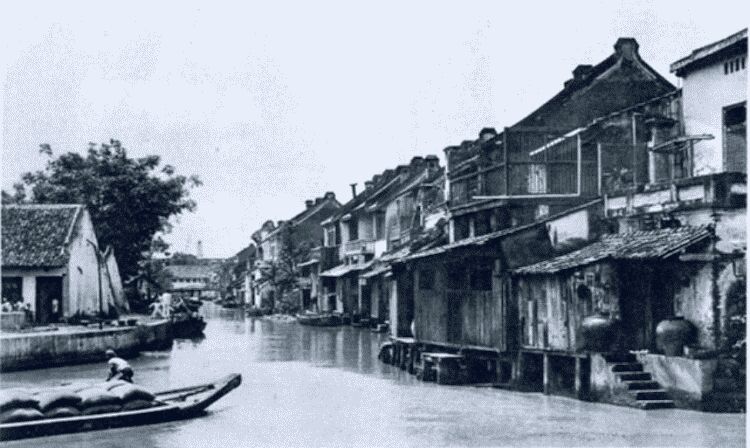
Here is a more recent photo of these selfsame canals, in Jakarta:
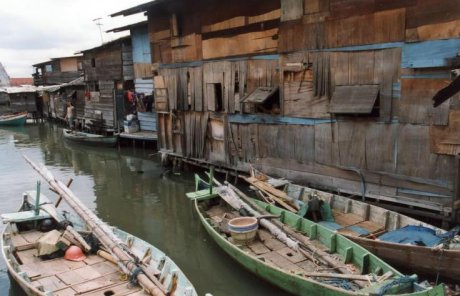
The Dutch built Indonesian capital has boomed in both population and economy.
Though poverty is rampant, as we see above (yes people do live in places like this).
Almost as surreal (but sadly, less and less so) to Americans are scenes like this below,
from modernizing Asia: where new skyscrapers rise along the banks of old Batavia.
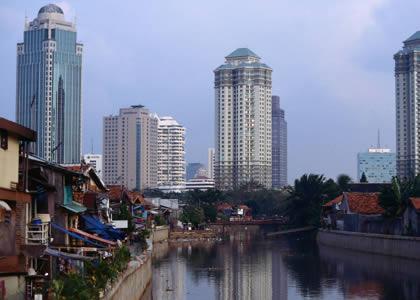
--Today, the canals of Jakarta, as well as other places in Asia like Bangkok, Thailand
are used not just by pleasure boaters, fishermen and the like, but by, it seems, everyone!
Look at this picture of the market in Bangkok, Thailand:
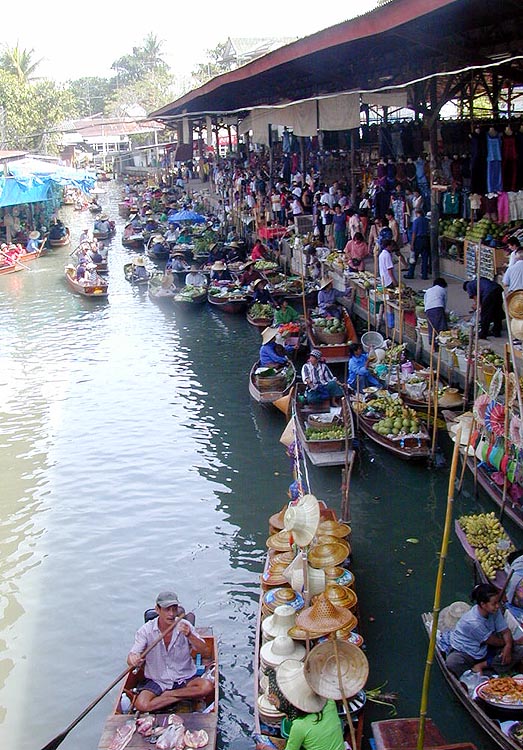
Whether it is a bustling marketplace like above, or an aquatic
arterial like below, entire cities in Southeast Asia get around by water travel.
And not only in East Asia- ask American and British servicemen who have been to Iraq's
southernmost city: Basra. They will tell you canals form the old core of that town as well.
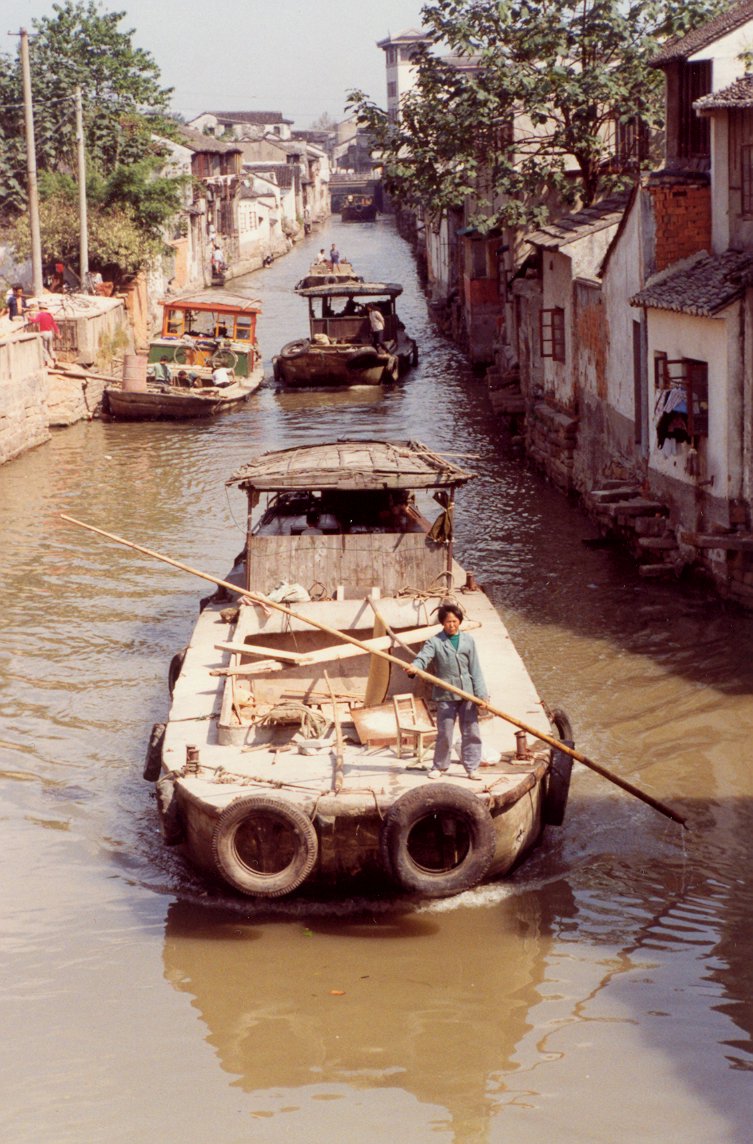
Hudson, therefore, is one of those rare places where an entire community can
participate, whether they know it or not, in an ancient tradition.
Marco Polo Leaving Venice Canals, by Canaletto
In the view below you can see Hudson Bay and the near canals.
Driftwood Peninsula--Port Hudson Marina--Hudson Beach Peninsula--Gulf Island Resort
| | | |
| | | |
Just a minute, just a minute... Here we are talking about living on the canals of Hudson.
But... just like all roads (including the Appian Way) lead to Rome, all canals here lead to Hudson Beach.
So I was thinking, now that you have examined this stuff, would it not be prudent to go there and see it as well?
![]()
Search in the above box for more on canals in Florida and other cities in the US and around the world
![]()
<------CLICK FOR YOUR DISEMBARKATION